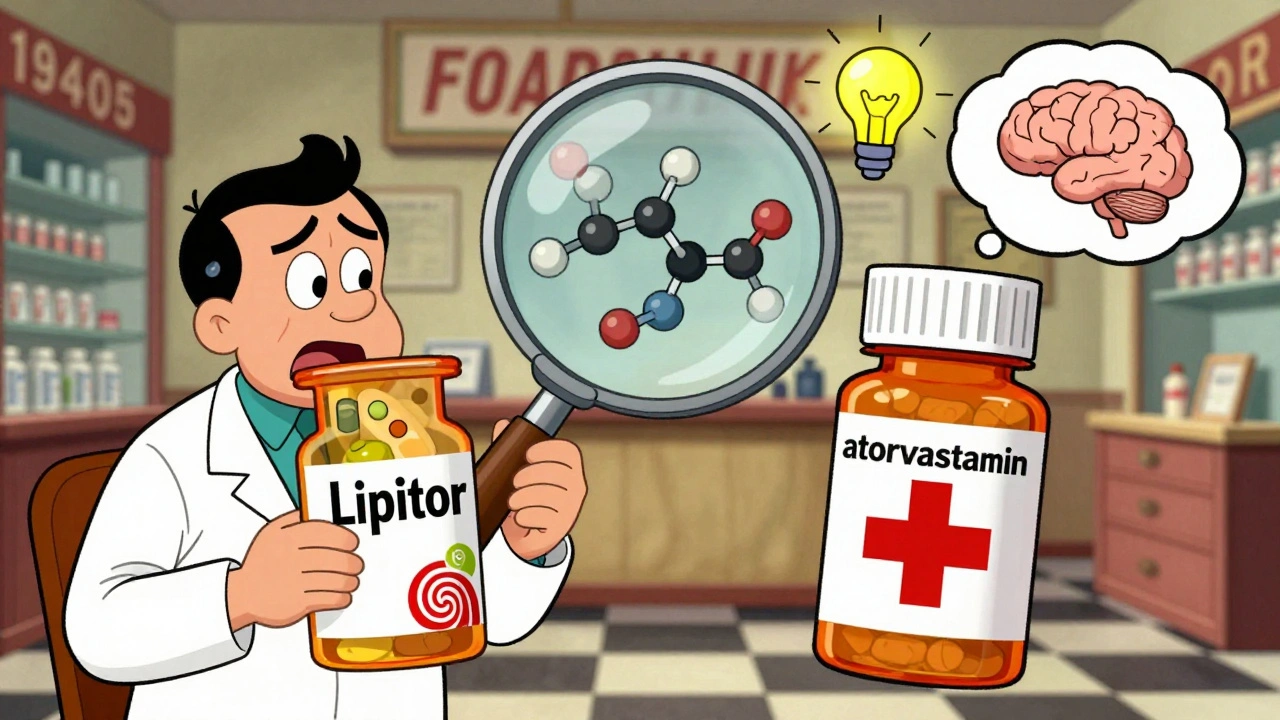Medication Comparison Tool
Select a condition to compare medications:
When doctors prescribe Hydroxychloroquine is a synthetic antimalarial that also dampens the immune system, making it a go‑to for conditions like lupus, rheumatoid arthritis, and, for a brief period, COVID‑19. But it isn’t the only option on the shelf. Below you’ll find a side‑by‑side look at the most common substitutes, their strengths, drawbacks, and when you might choose one over the other.
Quick Take
- Hydroxychloroquine is useful for malaria prophylaxis and several autoimmune diseases.
- For malaria, alternatives such as artemisinin‑based therapies, atovaquone‑proguanil, and mefloquine offer comparable cure rates.
- In rheumatology, methotrexate, sulfasalazine, and biologics like adalimumab usually provide stronger disease control.
- Side‑effect profiles differ: hydroxychloroquine can affect eyes, while alternatives may cause liver toxicity or neuro‑psychiatric symptoms.
- Cost and access vary widely across Australia; hydroxychloroquine is often cheaper than biologics but pricier than generic antimalarials.
What Is Hydroxychloroquine?
Hydroxychloroquine is a 4‑aminoquinoline compound approved in 1955 for malaria prevention and treatment. It works by accumulating in lysosomes, raising pH, and disrupting parasite metabolism. In autoimmune contexts, the same lysosomal effect reduces antigen presentation, calming overactive immune cells.
Typical oral doses: 200‑400mg daily for rheumatoid arthritis, 200mg daily for lupus, 400mg weekly for malaria prophylaxis. Half‑life hovers around 40-50days, so steady‑state levels build slowly.
Key Alternatives by Indication
Below are the most frequently suggested substitutes, grouped by the condition they address.
Malaria Prevention and Treatment
- Artemisinin‑based Combination Therapy (ACT) - the WHO’s first‑line cure for uncomplicated Plasmodium falciparum infections. Combines a fast‑acting artemisinin derivative (e.g., artesunate) with a longer‑acting partner drug (e.g., lumefantrine).
- Atovaquone‑proguanil (Malarone) - a daily pill taken 1‑2 days before travel, continued for 7 days after leaving the endemic area.
- Mefloquine - a weekly tablet used for prophylaxis in many South‑East Asian regions; notorious for neuro‑psychiatric side effects.
Autoimmune Diseases (Lupus, Rheumatoid Arthritis)
- Methotrexate - a folate antagonist that remains the cornerstone for rheumatoid arthritis; typical weekly dose 7.5-25mg.
- Sulfasalazine - a sulfa drug with anti‑inflammatory effects, often used in combination therapy for RA.
- Adalimumab (Humira) - a TNF‑α inhibitor biologic administered via subcutaneous injection every two weeks; reserved for moderate‑to‑severe disease.

Side‑Effect Snapshot
Understanding safety is crucial. Below is a concise comparison of the most common adverse events for each drug class.
| Medication | Primary Indication | Typical Dose | Common Side Effects | Cost (AU$) |
|---|---|---|---|---|
| Hydroxychloroquine | Malaria prophylaxis, Lupus, RA | 200‑400mg daily | Retinal toxicity (rare), GI upset, headache | ~30 |
| Artemisinin‑based Therapy | Uncomplicated malaria | 4‑day course | nausea, dizziness, mild liver enzyme rise | ~100 |
| Atovaquone‑proguanil | Travel prophylaxis | 250mg/100mg daily | Abdominal pain, metallic taste | ~140 |
| Mefloquine | Travel prophylaxis | 250mg weekly | Vivid dreams, anxiety, depression | ~70 |
| Methotrexate | Rheumatoid arthritis | 7.5‑25mg weekly | Liver toxicity, mouth sores, lung inflammation | ~20 |
| Sulfasalazine | Rheumatoid arthritis | 500‑1000mg BID | Headache, rash, neutropenia | ~15 |
| Adalimumab | Severe RA, Psoriatic arthritis | 40mg SC every 2 weeks | Injection site reactions, infections, rare malignancies | ~1,200 |
How to Choose the Right Option
Picking a medication isn’t just about efficacy numbers; it’s a balance of disease severity, lifestyle, comorbidities, and budget.
- Assess the condition. For mild lupus skin flares, hydroxychloroquine often suffices. For aggressive joint damage, methotrexate or a biologic may be needed.
- Look at contraindications. Patients with a history of retinopathy should avoid hydroxychloroquine. Anyone with severe liver disease should steer clear of methotrexate.
- Consider adherence. Weekly dosing (mefloquine) can be easier for travelers than daily pills, but the psychiatric side‑effect risk may outweigh convenience.
- Factor in cost. In Australia’s PBS scheme, hydroxychloroquine and methotrexate are subsidised, whereas biologics can cost over a thousand dollars a month.
- Plan monitoring. Hydroxychloroquine requires an annual retinal exam after 5years of use; methotrexate needs liver function tests every 4‑8weeks.
Practical Tips for Safe Use
- Never start or stop hydroxychloroquine without consulting your prescriber; abrupt changes can trigger disease flare.
- If you’re on mefloquine and develop vivid dreams, inform your doctor - a dose reduction or switch may be necessary.
- Take atovaquone‑proguanil with a fatty meal; absorption improves dramatically.
- For methotrexate, supplement with folic acid 1mg daily to blunt mouth sores and liver stress.
- Biologics like adalimumab require a clean screen for tuberculosis before the first injection.
Frequently Asked Questions
Can I take hydroxychloroquine for COVID‑19?
Current Australian guidelines advise against using hydroxychloroquine for COVID‑19 outside clinical trials. Evidence from large RCTs shows no benefit and an increased risk of cardiac arrhythmias.
How long is hydroxychloroquine safe for lupus?
Many patients stay on it for decades. The key is regular eye exams after five years; early detection of retinal changes prevents permanent vision loss.
Is ACT better than hydroxychloroquine for malaria?
For acute Plasmodium falciparum infection, ACT is the WHO‑recommended first‑line cure and clears parasites faster. Hydroxychloroquine is now only used where resistance is low, mainly in some South‑American regions.
What’s the biggest downside of methotrexate compared to hydroxychloroquine?
Methotrexate can cause liver fibrosis and, rarely, lung disease. Hydroxychloroquine’s main worry is eye toxicity, which is far less common and usually reversible if caught early.
Are there any drug‑free ways to reduce reliance on hydroxychloroquine?
Lifestyle measures-sun protection, balanced diet, regular low‑impact exercise-help control lupus flares. Some patients combine these with a reduced hydroxychloroquine dose after a stable period, but any change must be doctor‑guided.
Whether you’re packing for a trip to the Pacific, managing rheumatoid arthritis, or just curious about medication swaps, this guide gives you the data you need to talk confidently with your pharmacist or rheumatologist. Remember: the best choice balances clinical evidence, personal health, and practical realities.









Tony Bayard
Hydroxychloroquine has earned its reputation as a versatile drug, but the decision to use it should always start with the patient’s specific situation. In malaria‑free regions the drug’s low cost is appealing, yet the need for annual retinal screening can add a hidden burden. For autoimmune patients, its gentle immunomodulation often balances effectiveness with tolerability, especially when compared to harsher agents like methotrexate. Still, clinicians must weigh the risk of ocular toxicity against the convenience of once‑daily dosing. Ultimately, a shared decision‑making approach that incorporates disease severity, lifestyle, and budget will lead to the best outcome.
Jay Crowley
Hydroxychloroquine is cheap, but don’t forget the yearly eye exam.
sharon rider
When we weigh the scales of cost versus safety, the conversation becomes more than a spreadsheet of numbers; it reflects cultural attitudes toward health. In many societies the willingness to accept a low‑grade side effect, like occasional headache, is outweighed by the comfort of a familiar pill. Conversely, the specter of retinal damage can provoke a collective caution that shapes prescribing habits. These dynamics remind us that medicine is as much about shared belief as it is about biochemistry.
Bernard Valentinetti
Ah, the grand debate! 🌟 Hydroxychloroquine-cheap, historic, yet still the darling of many clinicians; but behold the alternatives: ACTs, Atovaquone‑proguanil, Mefloquine-each with their own entourage of side‑effects!!! 🧐💊 Choose wisely, for the path you tread is riddled with ocular exams, liver panels, and-dare I say-psychiatric evaluations!!! 😱
Kenneth Obukwelu
Indeed, the landscape of antimalarials and immunomodulators is a tapestry woven with both efficacy and caution. While the newer agents promise rapid parasite clearance, they also demand vigilance-whether that’s monitoring liver enzymes for atovaquone‑proguanil or watching for vivid dreams on mefloquine. The balance, as always, lies in aligning the drug’s profile with the patient’s life rhythm and risk tolerance. It's heartening to see such passionate discussion, reminding us that informed choice is the cornerstone of care.
Josephine hellen
Choosing the right medication in the realm of malaria prophylaxis and autoimmune therapy is a nuanced journey that intertwines clinical evidence, patient lifestyle, and economic considerations. First, one must acknowledge that hydroxychloroquine, while historically revered, carries a unique spectrum of side effects, most notably the potential for retinal toxicity, necessitating annual ophthalmic examinations after extended use. In contrast, artemisinin‑based combination therapies (ACTs) offer a rapid, highly effective cure for acute Plasmodium falciparum infections, yet they demand a short, intensive dosing schedule that may not suit every traveler’s itinerary. Atovaquone‑proguanil provides the convenience of daily dosing with a relatively benign side‑effect profile, but its cost often eclipses that of older agents, making it less accessible for patients on a tight budget. Mefloquine, taken weekly, can be a boon for adherence, yet its neuro‑psychiatric ramifications-vivid dreams, anxiety, and even depression-render it a less favorable choice for individuals with a history of mental health concerns. When we pivot to autoimmune indications, methotrexate emerges as the cornerstone for rheumatoid arthritis, delivering robust disease control but at the price of hepatotoxicity and the necessity for folic acid supplementation and regular liver function monitoring. Sulfasalazine, while modest in potency, offers an oral alternative with a different side‑effect constellation, including rash and neutropenia, and may be synergistic when combined with other disease‑modifying agents. The biologic adalimumab stands apart as a powerful TNF‑α inhibitor, reserved for severe disease refractory to conventional therapy; however, its subcutaneous administration, heightened infection risk, and staggering monthly cost-often surpassing a thousand dollars-make it a last‑line resort for many healthcare systems. Cost considerations extend beyond the price tag; in Australia, for instance, hydroxychloroquine and methotrexate enjoy PBS subsidies, whereas biologics are frequently relegated to special access schemes, creating disparities in patient access. Moreover, adherence plays a pivotal role: daily regimens may be burdensome for some, while weekly dosing can enhance compliance for others, provided the side‑effect profile is acceptable. Monitoring strategies also differ; hydroxychloroquine necessitates retinal exams, methotrexate requires quarterly liver panels, and biologics demand pre‑treatment screening for latent tuberculosis. Finally, patient education cannot be overstated-empowering individuals with knowledge about potential adverse effects, the importance of routine labs, and the signs that warrant immediate medical attention is essential for safe and effective therapy. In sum, the optimal therapeutic choice is a personalized mosaic, crafted from the intersecting tiles of efficacy, safety, cost, patient preference, and healthcare infrastructure, all guided by vigilant monitoring and open communication between clinician and patient.
Ria M
What a masterful exposition! The interweaving of pharmacodynamics with socioeconomic threads reads like a modern epic; each sentence builds upon the last, creating a vivid tableau of therapeutic decision‑making. Your attention to monitoring protocols and patient education underscores the humane side of clinical practice, reminding us that medicine is as much about compassion as it is about chemistry. Bravo for capturing the complexity without sacrificing clarity.
Michelle Tran
Meh. 😐
Delilah Jones
Skipping the eye‑exam is reckless; the risk of irreversible damage outweighs any convenience.
Pastor Ken Kook
From a practical standpoint, the choice often boils down to what fits into a person's daily routine. Weekly pills like mefloquine can be a lifesaver for a busy traveler, yet the neuro‑psychiatric side‑effects shouldn't be ignored. Daily regimens, whether hydroxychloroquine or methotrexate, demand discipline but offer more predictable pharmacokinetics. Ultimately, the best plan is the one the patient can stick to without compromising safety.
Northern Lass
It is an egregious oversight to overlook the specter of systemic bias when enumerating therapeutic options. One must interrogate the hegemonic narratives that prioritize low‑cost, readily available agents at the expense of individualized risk‑benefit analyses. The supposed universality of hydroxychloroquine's efficacy masks a labyrinthine web of ocular surveillance protocols, which, in resource‑constrained settings, translates to inequitable care. Moreover, the clandestine influence of pharmaceutical lobbying in shaping clinical guidelines cannot be dismissed without invoking the specter of corporate complicity. In sum, a hyper‑critical, perhaps even conspiratorial, lens is requisite to deconstruct the veneer of neutrality that pervades contemporary pharmacotherapy discourse.
Johanna Sinisalo
While it is vital to remain vigilant about power dynamics in healthcare, let us also acknowledge the tangible benefits many patients derive from accessible medications like hydroxychloroquine. Practical, evidence‑based guidance-such as regular eye examinations and liver function monitoring-can mitigate many of the concerns raised. Empowering clinicians and patients with clear protocols ensures safety without succumbing to alarmist narratives. Together, balanced scrutiny and constructive support foster a healthier therapeutic environment.
OKORIE JOSEPH
All that talk about balance and protocols is just talk until someone actually stops prescribing cheap drugs and lets the big pharma bleed you dry. Stop pretending that a few eye checks are enough when patients are constantly on the brink of blindness. It’s a rigged system, period.
Lucy Pittendreigh
Honestly, most of this is overblown. The side effects are rare and the costs are minimal. Do we really need a drama about it?
Nikita Warner
The safety profile of hydroxychloroquine, when adhered to recommended dosing and monitoring, remains favorable for many patients, particularly in the context of autoimmune disease management. Nonetheless, a structured approach-annual retinal screenings after five years of therapy and periodic hepatic evaluation-ensures early detection of potential adverse events. In practice, clinicians should balance these considerations against the drug’s cost‑effectiveness and patient preference, fostering shared decision‑making that prioritizes both efficacy and safety.
Liam Mahoney
Look, the whole talk about “shared decision‑making” sounds nice but it’s just a fancy way of saying “let them pick whatever cheap drug they want and hope they show up for tests.” Real world is harder than your polished guidelines.
surender kumar
Oh, please-another lecture on “monitoring” while the real issue is that doctors love to push brand‑name biologics for the cash. If you’re not paying for the adalimumab, you might as well be using a placebo. #sarcasm